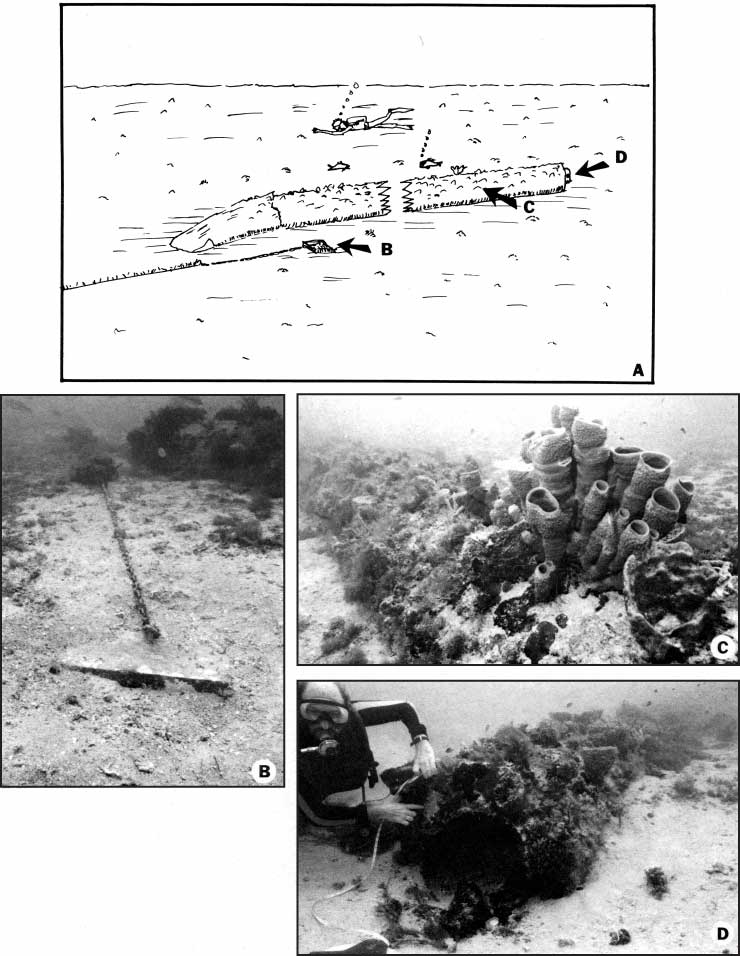FISC - St. Petersburg
Figure 125. Well site C (from Dustan et al., 1991). (A) Sketch of 23-m-long conductor-pipe casing. Well bore is at left, where pipe bends into bottom. Arrow directions indicate view angles of underwater photographs. Clumps of brown fleshy algae littered the surrounding sandy bottom. (B) Cement cube with chain and nylon line attached. Note fleshy algae growing on chain and line. Conductor pipe is at upper right. (C) View of sponges and other encrusting organisms on pipe. (D) View of cut end of 91-cm-diameter conductor pipe shows 51-cm-diameter inner casing. The annulus between both pipes was filled with cement. Diver points at cement, visible only after dislodging encrustations with hammer. Pipe contained lobsters and fish. Large sea anemone lived in annulus at right side of pipe.
|
Can't see the printable PDF version? Get the free Adobe Acrobat® Reader. |
